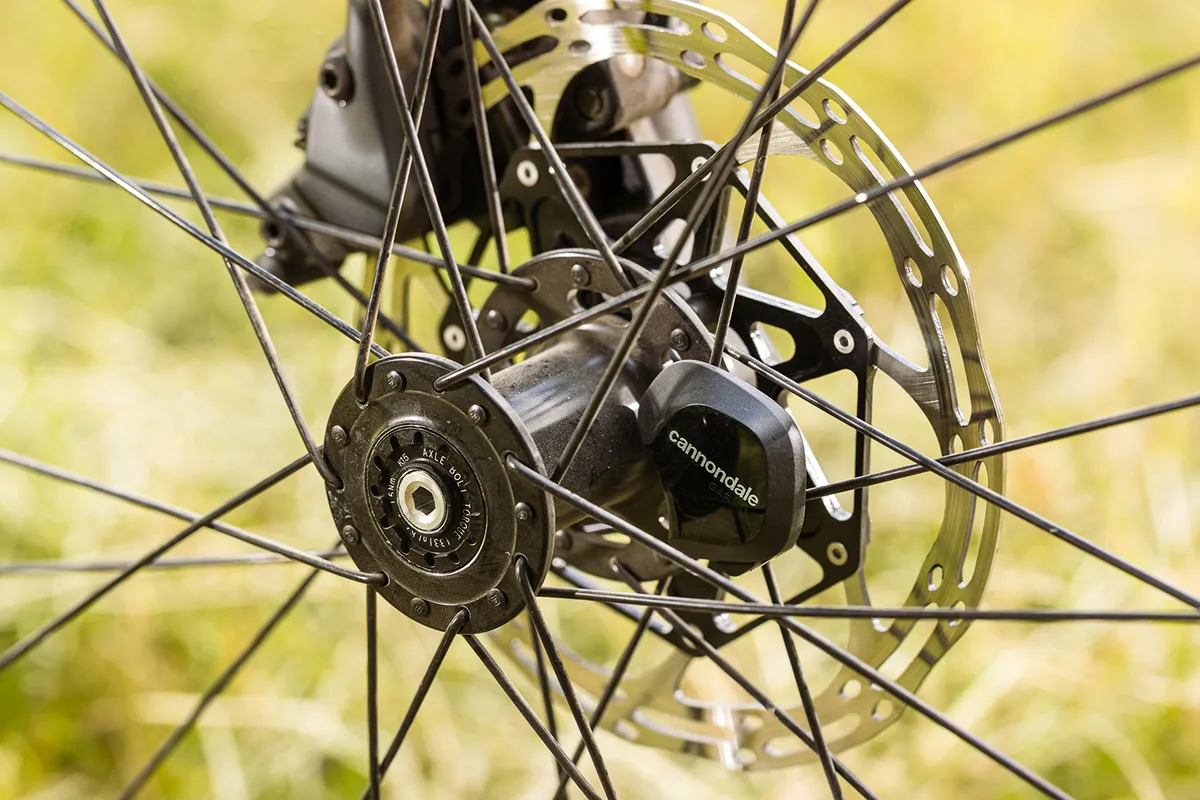We were hugely impressed with the go-anywhere capability of Cannondale’s new Topstone Lefty last year. At the same time as rolling out the tech update of the Oliver single-sided suspension fork on that Topstone, Cannondale also launched an all-new electric version of the bike equipped with the same clever fork and Kingpin suspension rear end.
Its other electric drop bar, the SuperSix EVO Neo has a smaller battery and ebikemotion power driven by a rear hub motor for more emphasis on light weight.
With the Topstone Neo, Cannondale has opted to go for a big tank and power in the form of Bosch’s latest Performance Line CX motor (capable of 850w in Turbo mode) mounted within the core of the frame at the bottom bracket, powered by a Bosch PowerTube 500Wh battery. That’s a system more commonly found on high-end e-mountain bikes not drop-barred machines.
The Topstone Neo provides plenty of potential for increases in both power and range over lighter e-assist options, and comes across more as an update to Cannondale’s Synapse Neo. If Cannondale was being completely honest, the Synapse Neo was much more of an e-gravel bike than its endurance moniker would suggest.
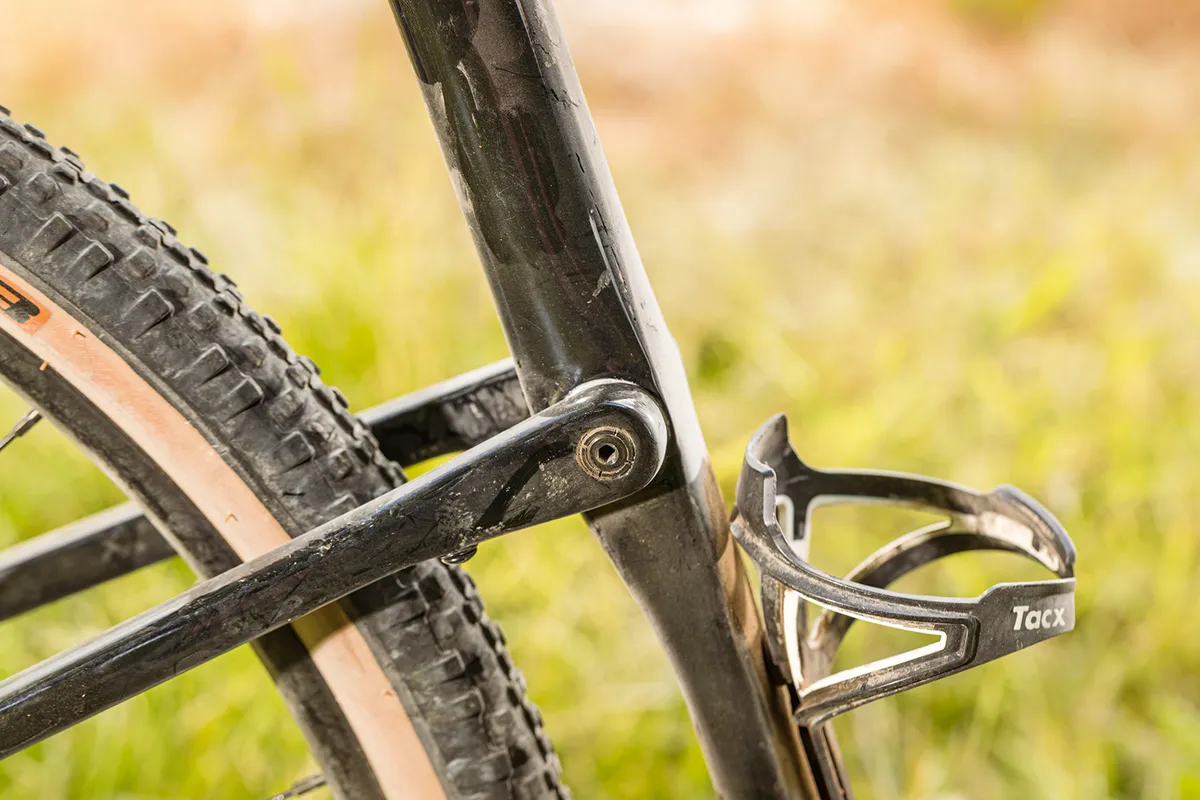
This Neo’s carbon frame follows the same design as the standard Topstone with Kingpin suspension at the rear where the seatstays attach to the seat tube via a pinned joint (the Kingpin) that sits on bearings.
The chainstays are designed to flex when you hit a bump or drop into a pothole so the whole pivot end can move.
With a rigid BallisTec carbon fork from the standard Topstone you get around 30mm travel at the rear, with the Oliver upfront you get 30mm at both ends.
The single-sided Lefty fork looks very different but the engineering behind it is actually quite simple. It’s a telescopic fork with a larger upper than lower (upside down compared to traditional suspension forks). Rather than using round stanchions like every other fork, the Lefty is actually three-sided: imagine a capital D with a flat bottom so the fork can’t twist because of its shape.
Between the stanchion and lower leg is an array of needle roller bearings with ultra-low friction, rather than bushes that can wear, get contaminated or stretch or squash over time.
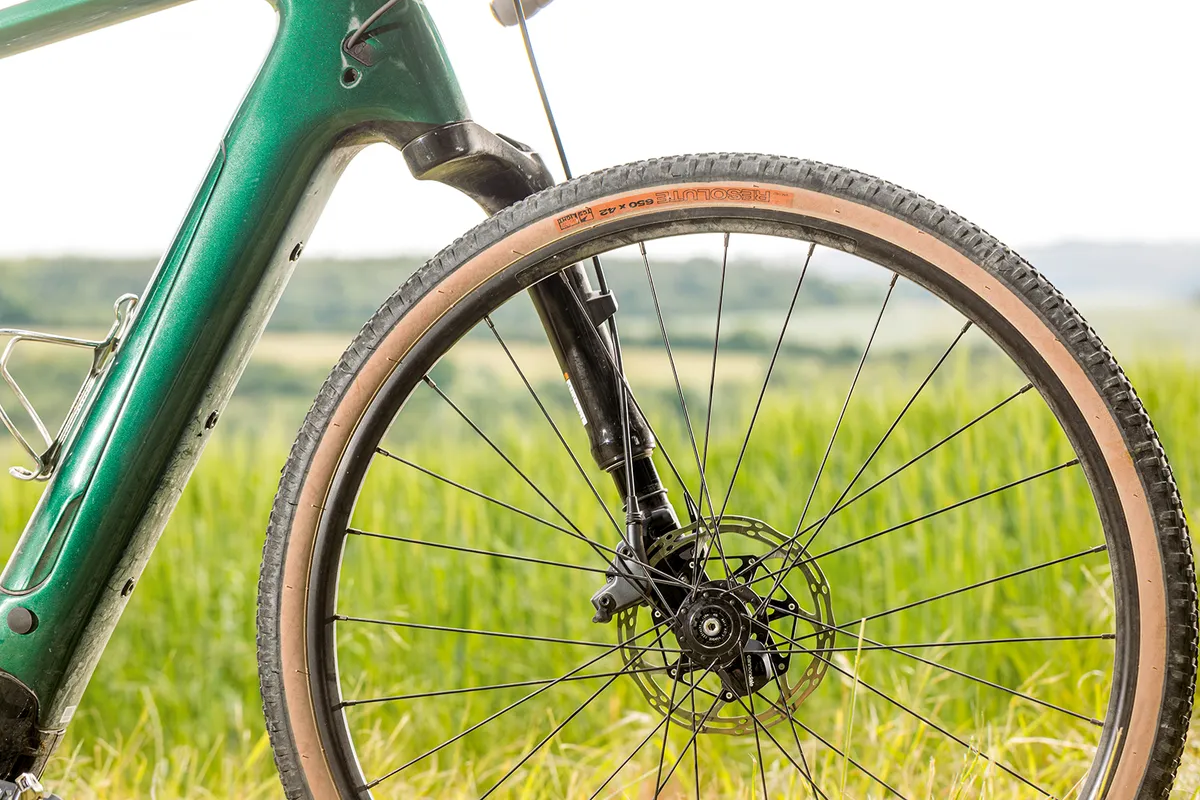
Jeremiah Boobar, head honcho of suspension design at Cannondale, is a vociferous advocate of the single-sided fork. He told us: “Lefty’s single-leg design is really a means to an end allowing us to use our needle-bearing system, which provides the lowest friction system in cycling. The application of the needle bearing creates an incredibly stiff fork (which we proved with our downhill race team in the early 2000s).
"In fact, a double-legged version would be too stiff. This allowed us to remove one leg to reduce weight. Once we were down to a single leg we could make the axle part of the lower tube, which provides a great stiffness gain that we can tune for various types of riding.”
Boobar explains: “By removing the friction from the chassis then putting it back in the damper, you can create a consistent and controlled experience on all kinds of bumps.”
This Neo feels very nimble and more akin to a cross-country racing mountain bike than a road bike adapted for dirt
The Oliver fork and the frame use the same ‘out-front’ geometry as the standard (non-electric) Topstone, where the dedicated carbon fork is running a 55mm offset (the Synapse uses a 45mm offset).
Cannondale claims this keeps the steering light and agile – even with big-volume tyres – while adding stability in the rough, with the added benefit of reducing the chances of toe-overlap (when the back of the front tyre hits your foot when turning tightly).
On the trail, this Neo does feel very nimble and more akin to a cross-country racing mountain bike than a road bike adapted for dirt.
Cannondale Topstone Neo Carbon 1 Lefty geometry
| | S | M | L | XL |
|---|---|---|---|---|
| Seat angle (degrees) | 74 | 74 | 74 | 74 |
| Head angle (degrees) | 71 | 71 | 71 | 71 |
| Chainstay (cm) | 42 | 42 | 42 | 42 |
| Seat tube (cm) | 41 | 44 | 50 | 55 |
| Top tube (cm) | 53.4 | 55.2 | 56.9 | 58.6 |
| Head tube (cm) | 12.7 | 15.8 | 19.5 | 22.9 |
| Fork offset (cm) | 5.5 | 5.5 | 5.5 | 5.5 |
| Trail (cm) | 6 | 6 | 6 | 6 |
| Bottom bracket drop (cm) | 6.4 | 6.1 | 6.1 | 5.9 |
| Bottom bracket height (cm) | 27.9 | 28.2 | 28.2 | 28.4 |
| Wheelbase (mm) | 1,018 | 1,038 | 1,057 | 1,076 |
| Standover (cm) | 73.3 | 76.3 | 81.4 | 85.8 |
| Stack (cm) | 54.9 | 57.5 | 61 | 64 |
| Reach (cm) | 37.7 | 38.7 | 39.4 | 40.2 |
Superbike spec
The Topstone Neo platform is compatible with 650b and 700c wheel sizes, but the new Lefty-equipped models come with 650b wheels out of the box (unlike non-lefty equipped models – ebike and standard – that stick to 700c).
This being a flagship bike, it has the same ‘mullet spec’ (small at the front, large at the back) SRAM AXS layout like the best of the non-e Topstones, with the drivetrain being a mix of SRAM Force AXS road components and mountain-bike Eagle parts.
This means a massive range for only 12 speeds from the 42-tooth chainring and 10-50 cassette. A 42/10 gear gives around a 114-inch gear for the wheel/tyre combination. That’s like running a 50/12 gear on a standard drivetrain.
At its lightest, a 42/50 gives 22.9 inches – a standard 34/32 gear gives you 28.9 inches. The bigger the gear inch, the harder it is to pedal and the further the distance the bike will move with each revolution.
- Road bike groupsets: everything you need to know
- Mountain bike groupsets: everything you need to know
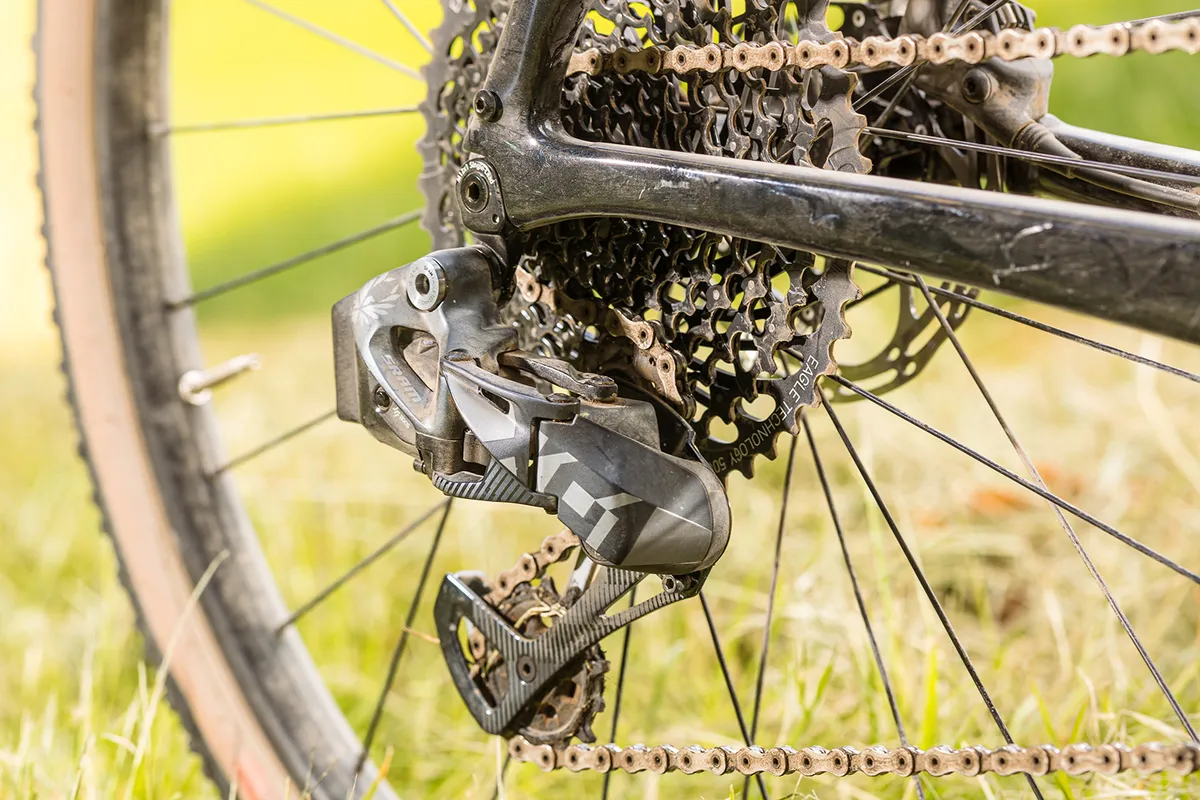
The Bosch motor assist provides a huge amount of boost when you need it and it’s easy to control via the bar-mounted switch, and to monitor through Bosch’s minimal but full-colour Kiox display.
There are four modes: Eco, Tour, Sport and Turbo. The Eco setting provides the lowest assistance level (40Nm of torque, 60 per cent support level) and, as you’d expect, the highest potential range (around 141km). Tour mode offers 50Nm/140 per cent and Sport 75Nm/200 per cent. At the other end of the scale is Turbo mode with 85Nm of torque, 340 per cent support level.
The power percentages are the actual peak power. The Bosch motor has a nominal output of 250w, but in Turbo can produce 340 per cent of that, or 850w.
It’s still governed by the 15.5mph limit, so the huge power input only comes in short ‘turbo’ bursts. It gives the full power available but shortens the range significantly (to 45km), but then you’ll only use it sparingly out on the road or trail.
With e-road bikes the electric motor only engages when you pedal and it will stop assisting once you reach 25kph to comply with current law (although EU law allows a 10 per cent margin, so that could be as much as 28kph).
Cannondale has been canny in fitting slimmer 42c 650b tyres on the Neo (the non-electric bike gets huge 47c rubber). This drops rolling resistance noticeably, which means you ride above, or around, the speed limit in normal conditions, especially on tarmac sections between the trails.
Comfort and control

Off-road the Neo exerts the same brilliantly balanced control as its non-assist sibling. The bike shakes off ruts and bumps with ease thanks to the soft-tail Kingpin suspension working harmoniously with the Oliver fork up front; although it has to be said that the alloy bar (which is a lower spec than I’d expect here) does transmit more road and trail noise than a carbon bar.
Combined with slimmer tyres and the extra weight acting on the suspension, the Neo can’t match the standard Topstone in smoothing out the trail ahead.
The Neo in this guise is a very expensive bike and I would prefer to see a carbon bar, rather than the Cannondale 3 alloy unit that you can find on the £1,200 alloy Topstone.
Why electrify?
While some cyclists will always remain unconvinced (there are still those yet to welcome disc brakes), the truth of the matter is that ebikes serve to enhance your experience.
On the road that means climbing quicker for the same physical exertion, ideal if you ride with faster and fitter companions or you’ve lost some of your youthful spark. Also, ebikes can be vital if you’re riding back to health post-injury or you’re a cyclist with physical impairment.
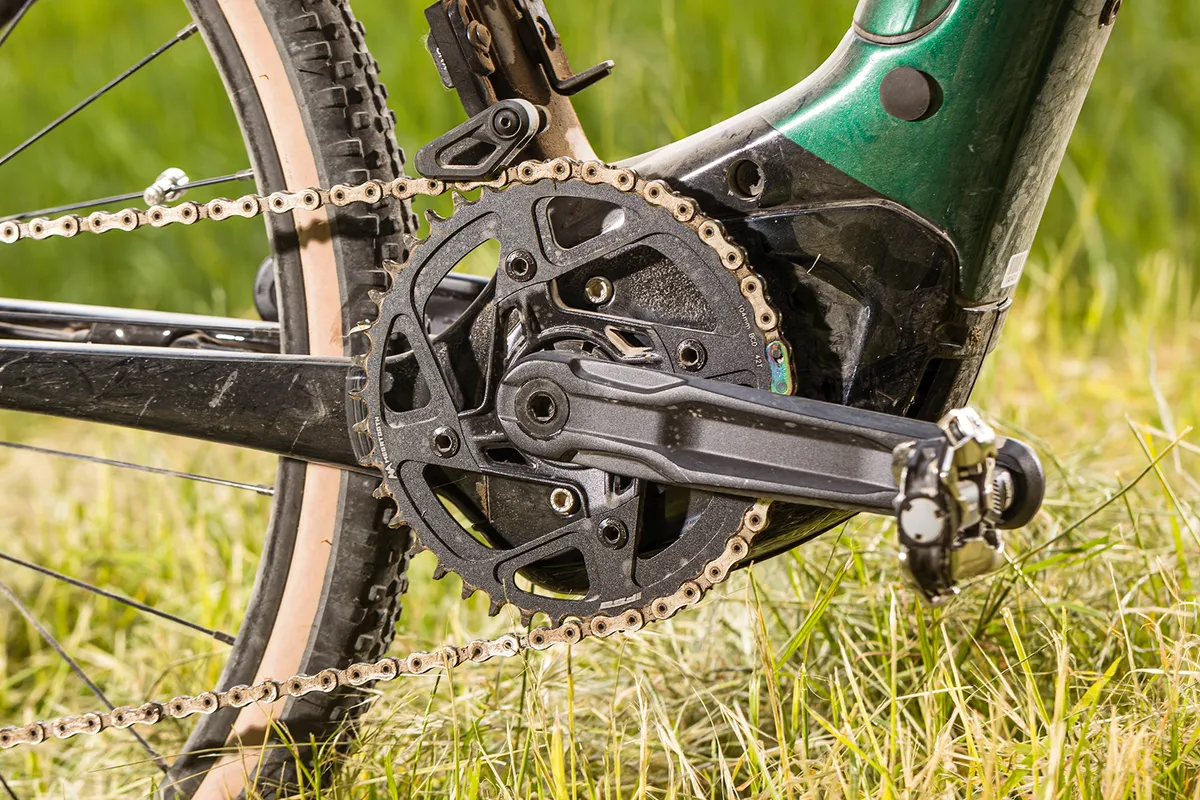
Gravel is where I feel that e-performance makes the most sense for more riders in that it keeps you on the pedals on terrain that on a standard gravel bike could see you walking.
The power and torque provided by the Bosch unit mean any slope or incline, even on the poorest surfaces, can be attacked. Often on a non-electric bike you need to drop into a low gear and get out of the saddle to muster the power to even attempt such inclines, and you’re always running the risk of slipping traction then dabbing a foot, which means tiresomely having to hike with your bike.
On the Neo, you simply slam the system into Turbo, select the right gear, sit in on the bike to ensure rear wheel grip and scramble up to the top of the hill, motocross style.

As soon as you experience this level of the bike’s competence it all starts to make sense, and while I’d argue that e-road bikes can be great levellers for uneven riding groups, or a fine way to extend your riding life when age and a lifetime of miles in your legs start to catch up with you, the Neo simply adds something more – and that ‘something’ is sheer unadulterated fun.
Something that we roadies should learn from the mountain bike community is that the best electric gravel bikes are fun, while also being seriously sporty. This Neo allows you to ascend and traverse terrain that’s beyond the physical capabilities of your average gravel bike.

When judging the range of any ebike it’s more about riding smart with the system, as opposed to simply using the manufacturer’s claimed range.
With the Neo that meant riding the bike in its intended terrain (gravel and trails) and switching between modes as necessary – and its range certainly impressed.
I covered more than 600km in total on multiple rides, consistently achieving a range of around 100km and with an elevation of around 1,000m too. That’s excellent, especially when considering that 90 per cent of the terrain on those rides was dirt, singletrack and gravel.
Leftfield fun
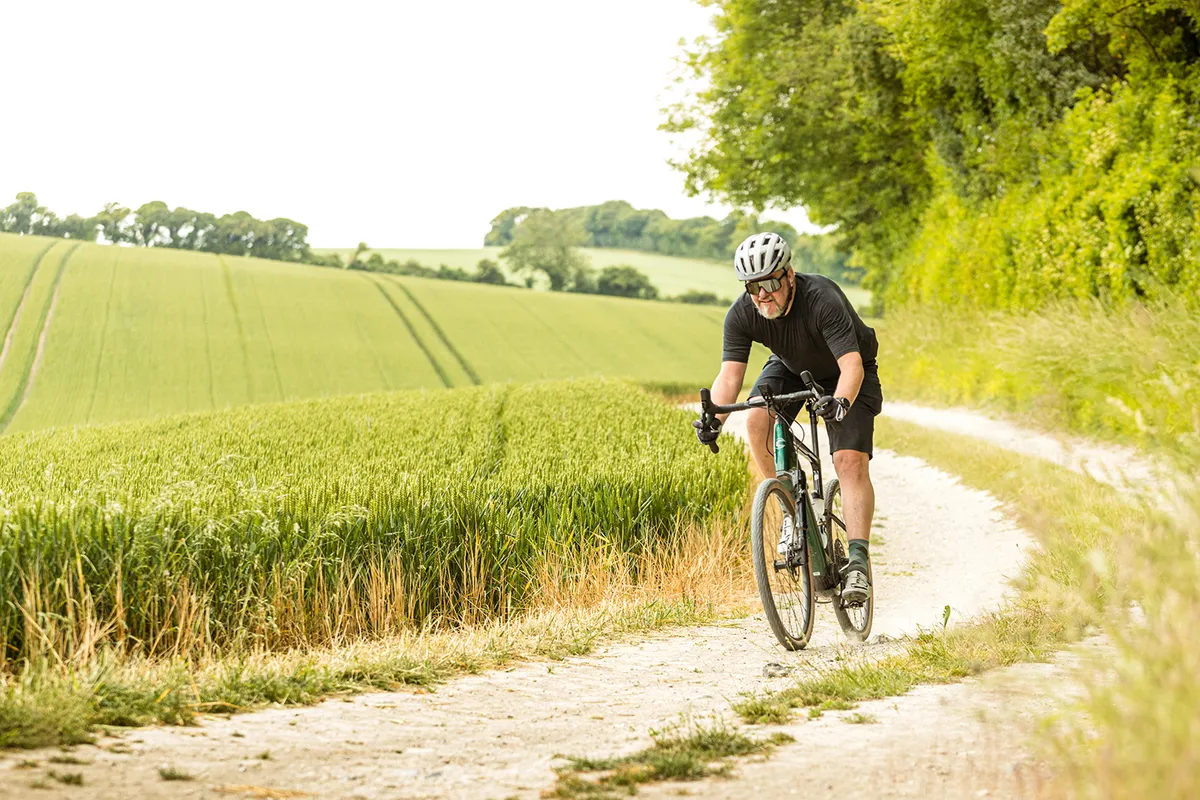
As much as this range-topping Topstone impresses me, I’d like to see a few changes, such as the tyres. I can see the reasoning behind going slimmer on 650b wheels, but I’d love to be able to exploit all that Bosch power and torque over more extreme terrain, so fatter tyres would be ideal.
I also think a dropper seatpost, (where a remote switch on the bars controls a telescopic post allowing you to ‘drop’ the saddle height giving you much more room to manoeuvre when descending steep off-road slopes) shouldn’t be too much to ask at this price: a bike that can ascend such extremities should be as confident coming back down again.
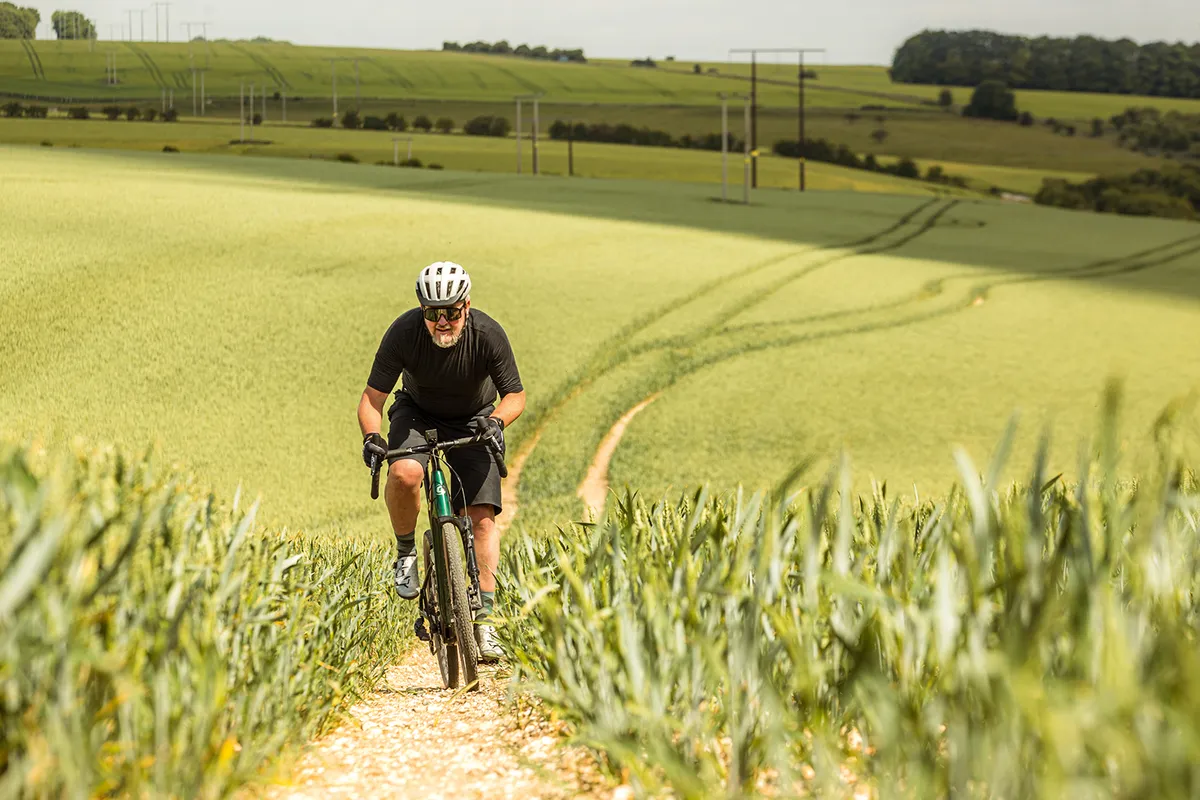
Minor niggles aside, the Lefty Neo has the potential to be a genre-defining machine, just as Specialized’s 2013 Turbo Levo FSR brought e-mountain bikes to the masses. It’s hard to explain just how much fun is on tap with the Neo Lefty – you’ll never look at an off-road climb with anything but confidence.
Cannondale’s new Topstone Lefty Neo is one of the most capable dropped-bar ebikes I’ve tested. It may not have the benefit of the light weight of road bikes, such as the Bianchi’s Aria-E, Orbea’s gravel-biased Gain models and Cannondale’s own SuperSix EVO Neo, nor the outright range of Specialized’s super-premium S-Works Turbo Creo SL, but for fun and any-road ability it’s currently the bike to beat.
Product
| Brand | cannondale |
| Price | 8999.00 EUR,8000.00 GBP,9500.00 USD |
| Weight | 17.8000, KILOGRAM (L) - |
Features
| Fork | Lefty Oliver carbon 30mm travel |
| br_stem | Cannondale, 6061 Alloy |
| br_chain | SRAM X01 Eagle, 12-speed |
| br_frame | BallisTec carbon with Kingpin suspension, 12x148 thru-axle, removable down tube battery |
| br_motor | Bosch Performance Line CX 250W |
| Tyres | WTB Resolute 650b x 42c |
| br_brakes | SRAM Force, 160mm rotors |
| br_cranks | Praxis Alloy eCrank for Bosch |
| br_saddle | Fabric Scoop Shallow Race, titanium rails |
| br_wheels | WTB ST i25 TCS on Formula hubs |
| br_shifter | SRAM Force eTap AXS HRD, 12-speed |
| br_cassette | SRAM XG-1275, GX Eagle, 10-50 |
| br_seatpost | Promax SP-9032 carbon |
| br_handlebar | Cannondale 3 butted 6061 alloy |
| br_availableSizes | S, M, L, XL |
| br_rearDerailleur | SRAM X01 Eagle eTap AXS |
| Features | Battery: Bosch PowerTube 500Wh Display: Bosch Kio Lights: Supernova integrated rear light Wheel Sensor: Cannondale Wheel Sensor |

